Before I discovered the joys of the Headspace meditation app, I’d scroll my timeline before bed, allowing the glow of the blue-lit screen to lull me into a shallow sleep. I would wake up intermittently throughout the night, panic about something embarrassing I said in a meeting four years ago and wake up feeling like I’d never slept a wink at all.
I knew there had to be a better way. Thankfully, I got to use Headspace regularly while I tested the paid version of the app for the last couple weeks, and finally reclaimed some of my sanity. It turns out, I’m not just dreaming it — meditation does have real effects on your sleep cycle, mood and stress levels, according to Dr. Joanne Frederick, a licensed mental health counselor and author of “Copeology.” “Meditation and mindfulness help train the mind to focus on the present, making it less likely to ruminate on anxious thoughts that fuel depression,” she says.
The thing about meditation — or Headspace, specifically — is that you need to make it a habit in order for it to work longterm. “When practiced correctly and consistently, it functions by altering how your brain responds to anxiety and stress,” says Dr. Haley Perlus, a peak performance coach with a PhD in sport and exercise psychology. “During meditation, you can override the triggers stimulated from the amygdala and prefrontal cortex.” Perlus explains that when stress levels decline, depression typically wanes as well, creating a domino effect of psychological healing.
Let’s look more into what Headspace is, how it works and whether it might be right for you.
What is Headspace?
The Headspace app is designed for folks who are new to mindfulness and looking for some guidance. As its tagline suggests, Headspace aims to foster a space where mediation is made simple.
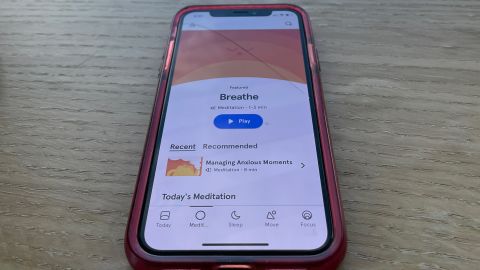
After your free trial where you’re invited to try the Basics, as the app calls it, you’ll have access to thousands of hours of longer, more in-depth content aimed to help you relax, stay focused, get moving or a combination of all three.
There are two plans to choose from: your annual plan (the best value) comes with a 14-day free trial, and is automatically billed at $69.99 per year, which comes out to $5.83 per month. The monthly plan comes with a 7-day free trial with a monthly payment of $12.99. The app has a 4.9-star rating, over 70 million downloads across all platforms, over 600,000 reviews and users in 190 countries.
How does Headspace work?
Headspace operates as a full-service relaxation solution. “[It] teaches eight helpful techniques derived from Burmese and Tibetan Buddhist traditions,” says Frederick, “and each method is contextualized throughout the different meditations, accompanied by animations that provide clarity.”
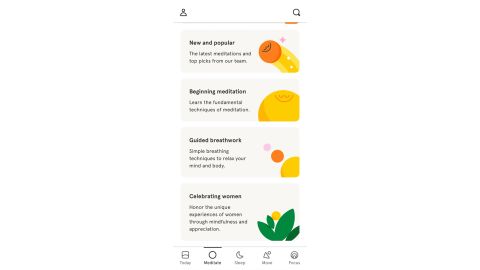
Once you’re on the homepage, you can choose your preferred method of mindfulness, from Meditate, which centers around stillness and accepting thoughts as they pass; Sleep, which aims to quiet mental chatter before bed; Move, which gets your heart pumping for a surge of feel-good endorphins; and Focus, which gives your brain a reset when you’re feeling sluggish, like a mid-afternoon espresso without the jitters.
Each category has even more subtypes to choose from, and you can use the filter in the top right corner to help you navigate them. Type in your own search parameters, or use their suggested ones, from guided breathwork to cultivating Black joy, to mindful eating and navigating injustice. Sessions range from a minute to three hours long. The best part? You don’t need much more equipment than your own body.
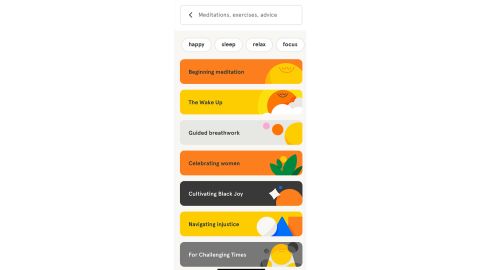
Headspace pros and cons
Headspace almost instantly improves my headspace within minutes of use, whether I’m feeling anxious, sad or both (it’s my specialty, really). But until it can make my bed and do my taxes, it will not be a perfect app. Here’s a breakdown of its strengths and where it fell short:
The pros:
The app tracks sessions and progress well. I appreciate that it prominently features favorited and recent classes so I don’t have to sift through ones I want to try again (this never happened FYI—there are virtually too many sessions to ever feel the need to repeat any).
I like being able to measure my stress (I try to quantify it, give it a number, and put it in a “box” to more tangibly manage it), so I greatly appreciated the Reflect section, which provides a detailed monthly check-in of your current mental health (I scored 19 on 40 on their stress scale—let’s see how I stack up a month from now!), a “mindful moment” featuring one brief yet meaningful quote, and stats including minutes meditated and average session length.
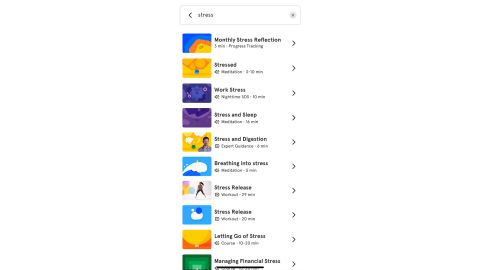
I love a couple moments to breathe as much as the next guy, but anything longer than that makes me feel a little confined and stuck. I like that there are tons of longer sessions to choose from that I can play in the background while I perform everyday tasks—this means I can stay on schedule all while infusing more mindfulness techniques into my everyday routine.
Because the app is audio-first, I have to really jive with the coach’s voice and style of delivery. When I first used the app six years ago, I loved co-founder and former Buddhist monk Andi Puddicomb’s soothing British accent so much I couldn’t bring myself to deviate from it this time around.

While the mental health benefits of Headspace are self-reported (and thus your mileage may vary), our experts agree that using an app like Headspace to meditate does yield an immediate sense of calm: “The mind has a default mode network (DMN), which leads to mind-wandering thoughts,” says Perlus. “These thoughts typically cause worry and rumination. A study conducted at Yale University found that meditation was able to decrease DMN brain activity, so when the brain starts to meander into anxious territory because of new connections that form through meditation, the mind can snap back into a place of calm.”
Frederick adds that meditating via an app like Headspace can also decrease stress and cortisol levels, improve concentration, lower blood pressure, boost self-awareness and self-esteem by allowing for the opportunity to examine one’s thoughts and feelings without judgment.
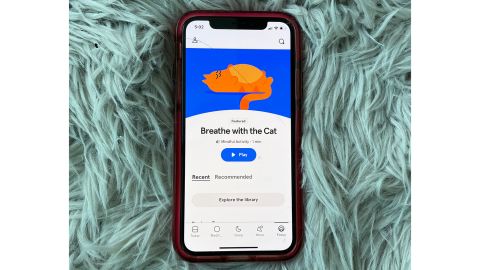
Perlus cites recent research from Lancaster University that cemented her trust in Headspace. The study examined the 280 most popular mindfulness apps on iTunes, narrowed them down to the 16 apps with the highest reviews, and found that only one of the lot—you guessed it, Headspace—was experimentally studied and proven to decrease depression and increase positive emotions after 10 days of use (why not try it out for yourself during their free trial?). The caveat is that “this does not mean other apps don’t work, they just haven’t been studied,” says Perlus.
The cons:
When you’re stressed, the last thing you want to do is browse through thousands of options (it’s like being hangry at a restaurant and expected to make a thoughtful decision about what to order). The inventory of over 500 sessions is unbeatable with its dozens of subcategories on top of the four main ones, but in a moment of semi-crisis (which is when I am most likely to reach for the app), I want a more curated selection to choose from.
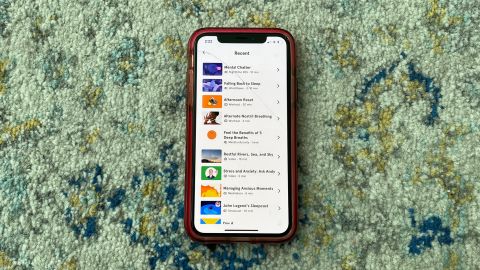
Meditation apps like Headspace simply aren’t for everyone, according to Frederick. “People with several questions about mindfulness may find the apps frustratingly limited and may want to take classes that are more interactive,” she says.
Is Headspace worth it?
Given that sleep and stress levels impact nearly every facet of our lives (mine included!), Headspace is worth it, full stop, since it can help you manage those areas. It makes for a great pharmaceutical-free alternative to sleep aids and a viable supplement to therapy (Headspace is by no means a therapy replacement, but given that our experts tout meditation as a viable way to calm your thoughts, it may help round out your existing mental health care treatment plan with few — if any — contraindications).
“Headspace can be an excellent choice for anyone looking to try meditation for the first time. It’s affordable, simple and easy to use,” says Frederick, adding that seasoned meditation users can take their practice to the next level by meditating with their untimed sessions or wandering through fictional lands during sleepcasts (or sleep podcasts). “If you’re new to the concept of meditation, apps can help you learn without feeling like you have to second guess the process.”
As for whether I’ll keep up the Headspace habit: it’s proven to be a far more beneficial habit than falling into a shallow sleep from the glow of my blue-lit screen, only to wake up a few hours later panicking about something embarrassing I said four years ago.
Source: www.cnn.com

